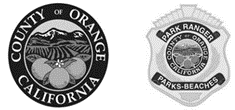In a pair of notices, the US Patent & Trademark Office (PTO) announced on October 18, 2022, that it is seeking public input on proposed initiatives directed at expanding opportunities to appear before the Patent Trial & Appeal Board, (Board) and expanding admission criteria for registration to practice in patent cases before the PTO. PTO Director Kathi Vidal explained that “[t]hese proposals are part of our broader initiatives to improve quality and participation.”
Regarding the expansion of opportunities to appear before the Board, the PTO requested comments on the following six questions:
- Are there any changes to Board rules or procedures that the PTO or the Board should make to increase opportunities to appear and/or serve as counsel and/or the lead counsel in America Invents Act (AIA) proceedings?
- If “yes” to question 1 as to the lead counsel, should the rules require that a non-registered practitioner have prior experience in AIA proceedings and/or have completed training before being designated as the lead counsel? What level of experience and/or type of training should be required?
- Should any rule or procedure revised by the PTO that permits a non-registered practitioner to be designated as the lead counsel in an AIA proceeding also require that any such non-registered practitioner be accompanied by a registered practitioner as backup counsel? If not, are there any circumstances or events that might occur during an AIA proceeding (g., the contemplated or actual filing of a motion to amend) that might warrant requiring a registered practitioner to then appear as backup counsel?
- Would a rule requiring that the lead counsel or backup counsel in an AIA proceeding be a registered practitioner have a significant impact on the cost of such a proceeding? If so, what would the impact be and would the impact be justified?
- Should any of the changes discussed above, if adopted, be implemented as a pilot program?
- Are there additional training and/or development programs the PTO should offer to increase opportunities for less experienced practitioners to appear as counsel and/or serve as the lead counsel in AIA proceedings?
- Are there any changes to the Legal Experience and Advancement Program (LEAP) that the PTO should make to increase opportunities to appear and/or serve as the lead counsel in AIA proceedings?
Regarding expanding the admission requirements to practice in patent matters before the PTO, comments on the following five topics were requested:
- The General Requirements Bulletin (GRB) lists three categories of scientific and technical qualifications typically used for eligibility for admission to the registration examination: (1) Category A, for specified bachelor’s, master’s and PhD degrees; (2) Category B, for other bachelor’s, master’s and PhD degrees with technical and scientific training; and (3) Category C, for individuals who rely on practical engineering or scientific experience and have passed the Fundamentals of Engineering test. The PTO is seeking comments as to acceptable degrees and whether it should add Category B degrees on a predetermined timeframe (g., every three years).
- Should the PTO accept [...]
Continue Reading
read more


 Subscribe
Subscribe




